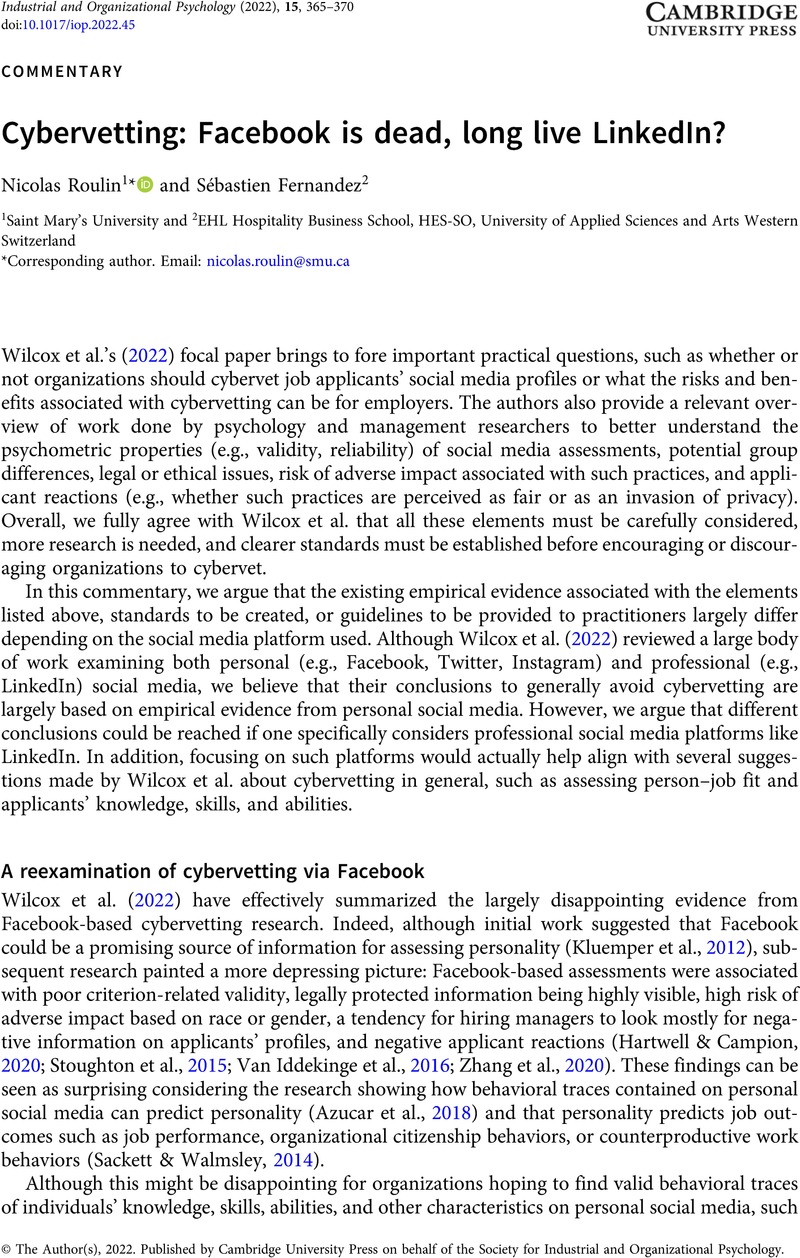Crossref Citations
This article has been cited by the following publications. This list is generated based on data provided by Crossref.
Mönke, Franz W.
Lüdemann, Hanna
and
Schäpers, Philipp
2023.
Personalauswahl 4.0.
p.
55.
Akbulut, Yavuz
Yildirim Şen, İrem E.
and
Şahin, Yusuf L.
2024.
Employer and employee perceptions of cybervetting as a selection method.
International Journal of Selection and Assessment,
Vol. 32,
Issue. 2,
p.
292.
Sallach, Tobias
Mönke, Franz W.
and
Schäpers, Philipp
2024.
Cybervetting of organizational citizenship behavior Expectations: Profile summary as a Key in LinkedIn-based assessments.
Computers in Human Behavior,
Vol. 154,
Issue. ,
p.
108113.





